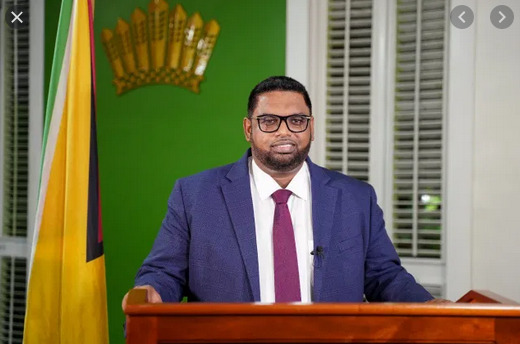President Ali Announces E&P Development Plans in Guyana
By Ndubuisi Michael Obineme
Following the recent hydrocarbon discoveries in the Guyana basin, The President of the Co-operative Republic of Guyana, Hon. Dr Mohamed Irfaan Ali has announced his Government intention to maximise the many business opportunities that exist along the value chain of the country’s petroleum sector.
The President made this announcement during his keynote address at the Guyana Basin Virtual Summit 2021, a three-day event that brings together world-renowned experts, stakeholders and industry players to explore opportunities as well as sharing ideas on issues that are key for the development of Guyana and Suriname’s growing oil and gas industries.
President Ali’s opening statement which also focused on his government’s development plans to expanding drilling, exploration and production activities in the country, noting that the Guyanese government is committed to ensuring they develop a business model that will create massive opportunities for the benefits of present and future generations.
Prior to this, the President disclosed that a major catalyst for industrialization and catapulting Guyana into an energy leading role will be the planned gas-to-shore project. This initiative, which will bring gas from the ExxonMobil operated Stabroek Block, is expected to afford the Guyanese economy the opportunity to have an enhanced manufacturing sector and lower electricity costs.
The President explained that it will certainly allow Guyana to become an “industrial powerhouse, a model energy state, the breadbasket of the Region, the Silicon Valley of the Caribbean, and a sustainable tourism paradise.”
In his words, “We have commenced discussions with Suriname, our neighbour, in the development of the energy corridor; Brazil, and French Guiana too will play important roles in that development, where we are going to develop one of the most competitive energy corridors along the Guyana shield.
“Our plans, as a government, stretch from large-scale agricultural investments and related projects to mega infrastructure which include bridges, a road to Brazil, a deep-water harbour, housing, communities and urban centres, port facilities and digital technology backed industrial parks and energy development.
“Our intention is to work with local and international investors in every dimension of this economy so as to ensure thriving economic sectors over the next five years and beyond,” the President added.
He concluded that this dynamic transformation will be driven principally by the private sector while adding that local and foreign businesses, working in tandem and sometimes in partnership, will act as the main driver of economic output efficiency and competitiveness.


